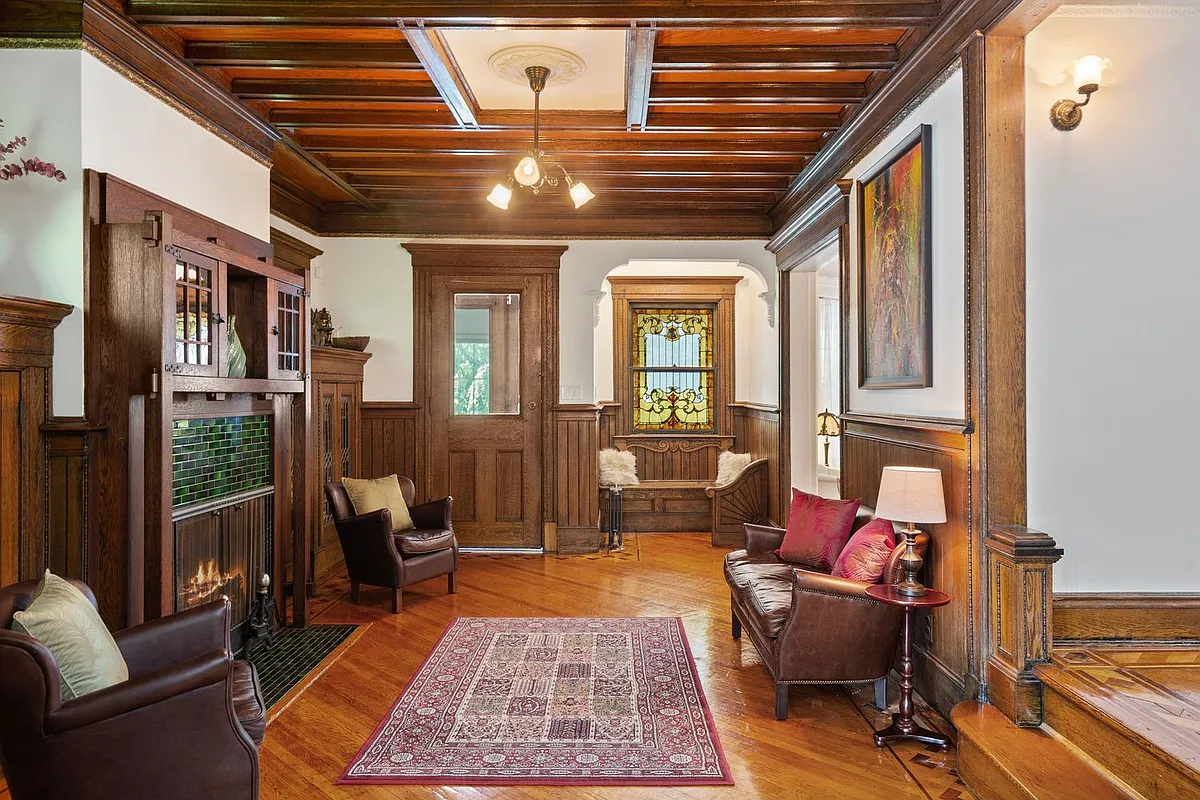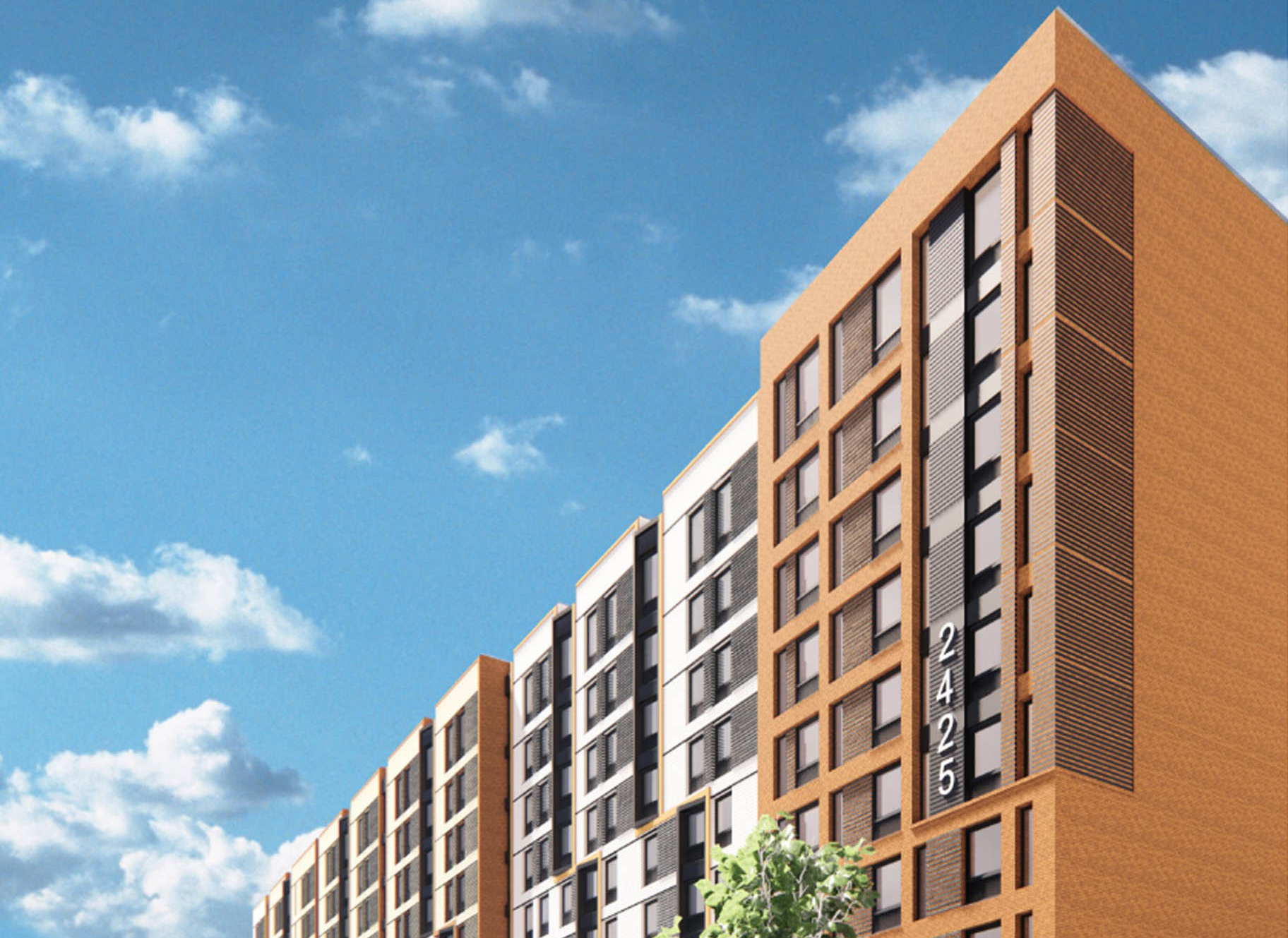LPC Calendars Two Brooklyn Buildings
Two Brooklyn buildings are set for a public hearing at Landmarks on March 22nd. The first is 2307 Beverly Road, the Sears Roebuck building in Ditmas Park Flatbush. According to this Forgotten NY article, the “huge Art Moderne monolith” was built in 1932 and was the first Sears retailer in NYC. Back in 2007, FNY…


Two Brooklyn buildings are set for a public hearing at Landmarks on March 22nd. The first is 2307 Beverly Road, the Sears Roebuck building in Ditmas Park Flatbush. According to this Forgotten NY article, the “huge Art Moderne monolith” was built in 1932 and was the first Sears retailer in NYC. Back in 2007, FNY wrote, “Sadly, it appears that Sears is only doing the bare minimum amount of maintenance to the store. I’m guessing that its days are numbered.” Hopefully not anymore! The other is the Public National Bank of New York Building at 47 Graham Avenue. According to the LPC, it was built in 1921-23 and designed by Eugene Schoen. “Designed in the form of a one-story temple, and clad in terra cotta or cast stone (now painted), it features rusticated columns and corner piers on both principal facades that frame rectangular and round-arched fenestration. Panels and entrance surrounds display a combination of classical and Secessionist ornament.”
Photos by Forgotten NY and Emilio Guerra





And no-one from Harvard is ever wrong! Edward Gleaser has been grinding that particular ax since at least 2002; the article in question dates from 2004 and concerns only Manhattan (although he has also criticized Chicago, SF, and Boston for the same sins). As they say, lies, damn lies, and statistics.
I have 2 main issues with landmarking. The first I have discussed here. As the amount of landmarked areas increases, their once minimal impact will grow into something that can have a serious economic impact on the city by making it more expensive and less flexible. A city that cannot adapt will stagnate.
The second issue is one of property rights. If as a building owner you want to freeze your building in time, then do so. However, you should not be able to force your neighbors to do so in order to have a streetscape that fits your definition of “nice.”
“More to the point, I think for benson, here is a situation where a community decides to go for landmarking and believe me, it is a lot of work to get landmark status. They see the benefits to it – economic, as well as aesthetic. Why shouldn’t they be allowed? ”
Because they are creating a restrictive covenant on the use of land which impacts the overall economics of our city.
I have no beef with the communities that are pushing landmarking. It’s the law of the land and as such, it’s their right. I am advocating for a change in the law itself. Landmarking has gone WAY beyond preserving historic buildings. 20,000 buildings is way too much.
I think Glaeser has an interesting proposal in this article. He proposes that there be some type of cap on the number of structures that can be landmarked – 5000. This would force the LPC and the communities to sort the truly important from the not-so-important, and keep the LPC’s workload manageable.
“The article I cited was written by an economist at Harvard. ”
I thought you disliked those Ivory tower types, benson? 😉
It’s also VERY interesting that folks think that NYC is immune to major population decline. NYC isn’t all that magical, unlike the myth folks have created for themselves.
In the 1970s there was a 10.4% decline in the population! OVER TEN PERCENT!! Then it took almost 20 years to the same population levels the city had in 1969.
http://www.osc.state.ny.us/localgov/pubs/research/pop_trends.pdf
So, as I’ve stated several times previous… creating a “Rich Island” may cause a similar decline in population (but for different reasons). The ‘mystique’ of NYC wears of real quick when you are commuting 4+ hours per day on overcrowded subways and busses from far-flung parts of the city. All of a sudden, Houston, Atlanta, Portland and even Buffalo look a whole lot more inviting!!!
I understand your reasoning, but again, I still say, the factors that make NYC expensive and why it is hard for it to be competitive have little to do with landmarking. Whether or not a neighborhood is landmarked has more to do with the economic status (except in the exceptions I mentioned)of residents who make more money and want greater convenience. Those neighborhoods get landmarked after they have been well established. The move to push out lower income people has more to do with the ever widening gap between the economic classes.
BHS- of course it plays a role but it’s minor compared to other factors. And yes, there is an economic impact but so far, it seems to have been a beneficial one. More to the point, I think for benson, here is a situation where a community decides to go for landmarking and believe me, it is a lot of work to get landmark status. They see the benefits to it – economic, as well as aesthetic. Why shouldn’t they be allowed? Because neighborhoods like Crown Heights North and bed-stuy are filled with lower income residents who love and want to protect their neighborhoods. I just don’t don’t see why there is all the angst over landmarking as opposed to the much greater and more serious economic and situational factors that are the real determinants.
Landmarking is by no means the only reason why New York is expensive, but that does not mean it does not play a role.
That role will only get larger as more and more areas full under the domain of the LPC.
“benson- the cost of living in NYC was always high- landmarking is not a major contributing factor.”
The article I cited was written by an economist at Harvard.
Bxgrl;
The issue is proximity to the central city, and how it affects commuting time. The older neighborhoods are closer to the central city and DO have better subway access than areas such as Flatlands and Bay Ridge (see today’s BR thread for proof of that). By landmarking these more central areas, you are forcing more development to the outer rings of the boro, and thereby raising the commute time for more people.
As Scott pointed out, this decreases NYC’s competitiveness. It is basically telling newcomers that they are in for a long slog should they want to find something affordable.
The issue being discussed is the economic impact of landmarking, not its popularity with people who have a vested interest in it.